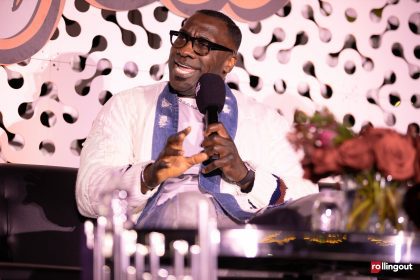Content warning: This article discusses eating disorders and self-harm, which may be triggering for some readers. If you or someone you know is struggling, please reach out to the National Alliance for Eating Disorders Helpline at 1-866-662-1235 or text “ALLIANCE” to 741741 for support.
The growth of eating disorder communities on social media platforms, particularly on X (formerly Twitter), has raised significant alarm among mental health experts and advocates. This trend highlights the complex interplay between technology, mental health and user vulnerability.
Over the past two years, one community on X has attracted over 173,000 members, with more than 70,000 joining since June alone. This group, part of “edtwt” (eating disorder Twitter), has become one of the largest on the platform, sharing thousands of posts daily that encourage disordered eating behaviors.
Many participants are young women and teenage girls, some as young as 13. These communities echo similar subcultures that have thrived across various social media platforms for over a decade, from Tumblr and Pinterest to Instagram and TikTok.
Despite X’s attempts to regulate content promoting self-harm, moderation efforts have largely failed. In September, X suspended the largest eating disorder community for violating its rules. However, members quickly migrated to similar groups, which were also subsequently suspended.
The National Eating Disorders Association, emphasizes that “eating disorders have the second-highest mortality rate among mental health disorders, second only to opioid misuse.” Constant exposure to idealized body images and disordered eating content can significantly impact vulnerable individuals.
Under Elon Musk’s leadership, X has expanded its Communities feature and introduced an algorithm-driven “For You” page, recommending content based on users’ previous interactions. This has led to users being exposed to pro-eating disorder accounts and communities, even without actively seeking such content.
Within these communities, the culture is often competitive, with members sharing goal weights and encouraging harmful behaviors. This toxic environment can validate and reinforce disordered eating habits, making it difficult for individuals to seek help or recovery.
Camille, a 20-year-old who has struggled with an eating disorder since middle school, described her community as initially intended to be a safe space but ultimately spiraling out of control due to algorithmic influence.
While platforms like Instagram and TikTok have begun directing users to help resources when searching for eating disorder-related terms, X currently lacks similar measures. Experts advocate for increased transparency from social media platforms and collaboration with mental health professionals to better understand algorithmic impact and promote recovery-oriented content.
The proliferation of these communities poses a significant risk to vulnerable individuals, particularly young women and teenagers. As they continue to thrive, it’s crucial for social media companies to implement effective moderation strategies and provide resources for those in need.
This situation underscores the broader challenges facing social media platforms in balancing free expression with user safety. It also highlights the need for increased digital literacy education to help users, especially young people, navigate online spaces more safely.
The role of algorithms in perpetuating harmful content is a particularly pressing concern. As platforms become more sophisticated in content recommendation, there’s a growing need for ethical considerations in algorithm design and implementation.
Mental health experts stress the importance of offline support systems. While online communities can provide a sense of belonging, they often lack the professional guidance necessary for recovery from eating disorders.
As the digital landscape continues to evolve, the responsibility of social media platforms in safeguarding user well-being becomes increasingly critical. This involves not only reactive measures like content moderation but also proactive steps to promote healthy online environments.
Addressing the issue of eating disorder communities on social media requires a multifaceted approach involving platform policies, mental health expertise, education and user awareness. As these discussions continue, it’s crucial to remember the real human impact behind these digital interactions and the urgent need for effective solutions.
For support, resources, and information about treatment options, contact the National Alliance for Eating Disorders Helpline at 1-866-662-1235 or text “ALLIANCE” to 741741. More information about eating disorders can be found on the National Eating Disorder Association’s website.

















